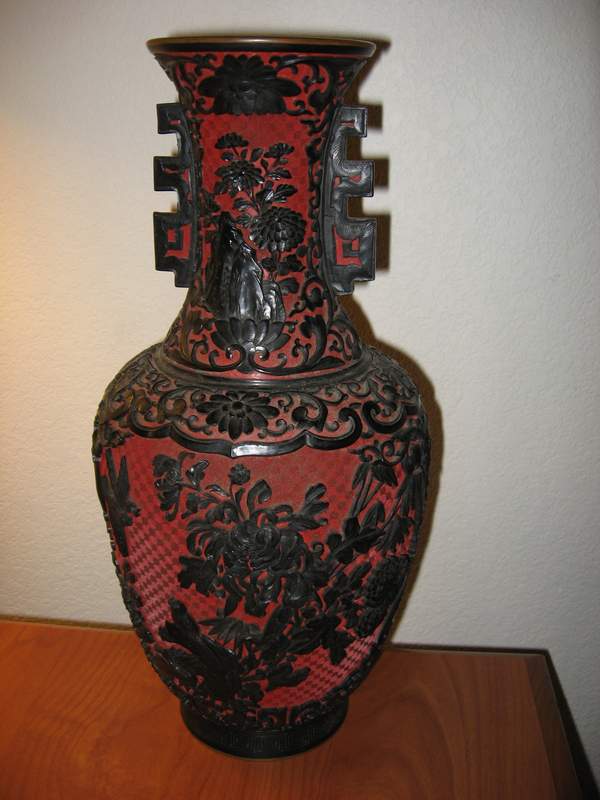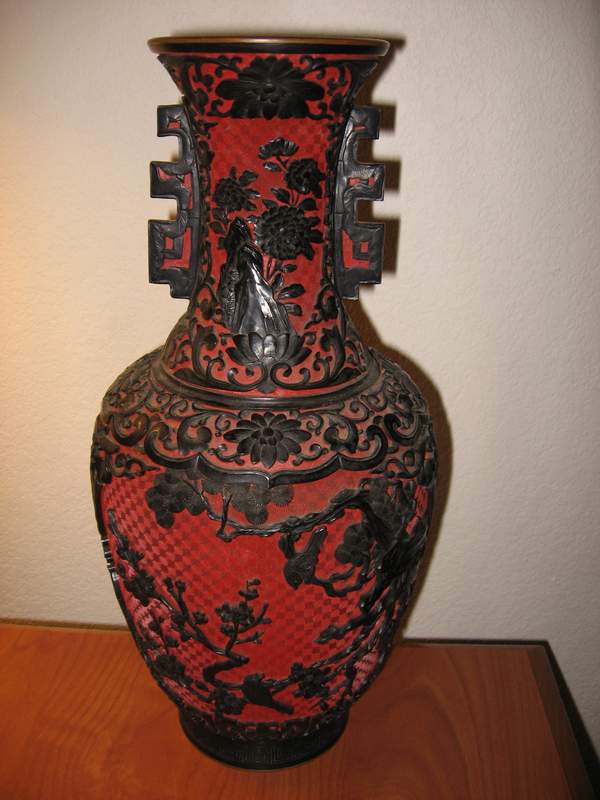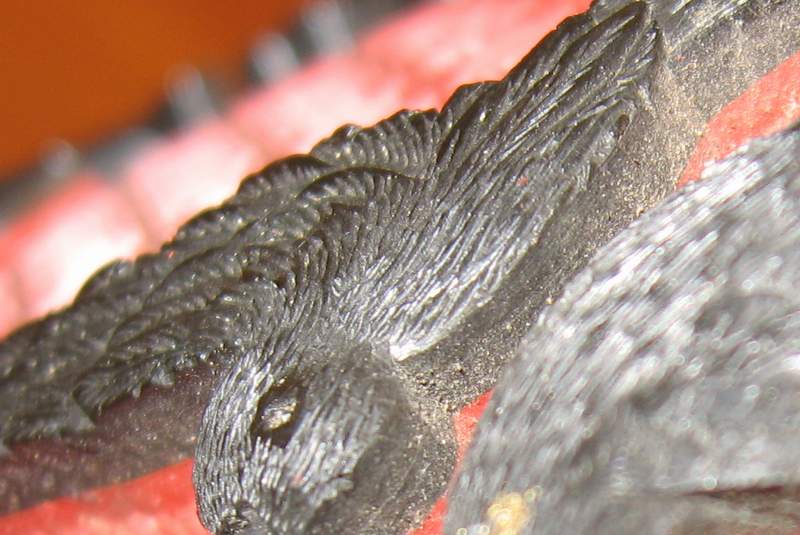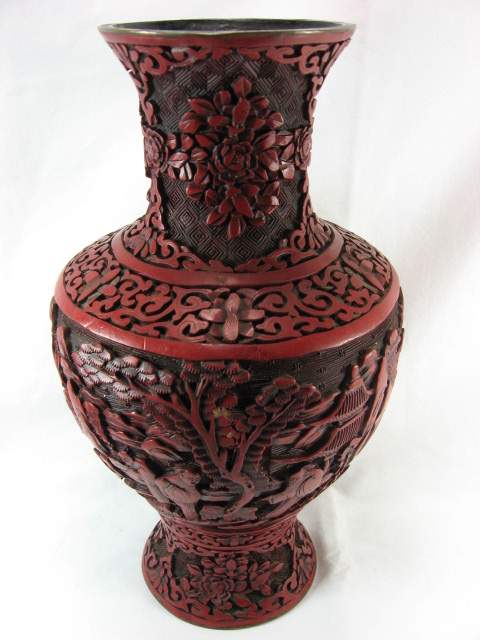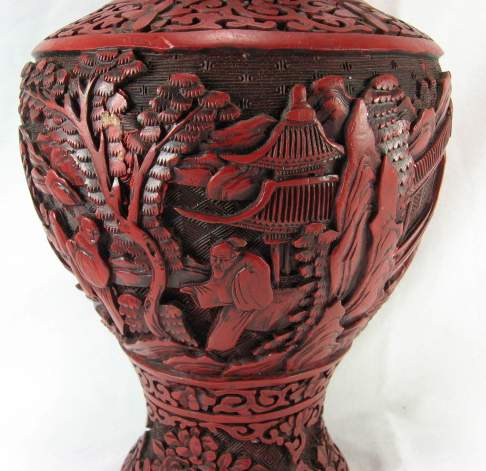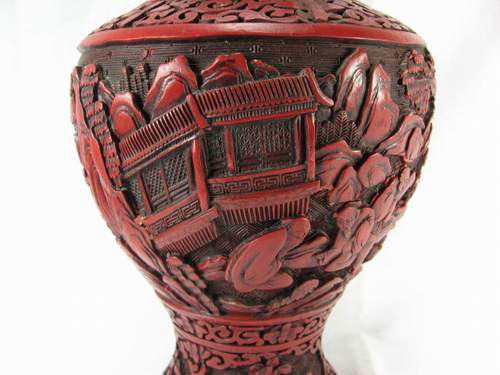
|
Subject:Re: Carved Lacquer Vase
Posted By: Doug & Moyra Tue, Mar 27, 2007
Michael -
We believe what you are seeing is the substrate layer that is applied over the metal body. Enamel is actually a paste of ground colored glass that is applied to metal and fired in a kiln. It is really just melted glass. Needless to say, a wood bodied article could not stand the heat.
Lacquer can be applied over metal, wood or even ceramic. When your vase was constructed, a thin metal body was enameled on the inside and fired. This gives it rigidity - and rigidity prevents the lacquer from peeling off. This type of enamel lined construction is often seen in Japanese Meiji cloisonne.
The outside of the vase body was then covered in a thin silk or linnen cloth that provides a base for the lacquer to stick. An adhesive paste was brushed on the cloth. Then a thin lacquer layer was applied, allowed to dry, sanded smooth and the process repeated many times.
As far as the quality goes, it is about as nice as they get for contemporary 20th C pieces. It may not be that old now, but it should be preserved for future generations and it's value will rise over time.
Cheers


|
 Carved Lacquer Vase
Carved Lacquer Vase  ( China & Japan ) - Michael - Mar 25, 2007 (06:32 AM)
( China & Japan ) - Michael - Mar 25, 2007 (06:32 AM)  Re: Carved Lacquer Vase - Doug & Moyra - Mar 26, 2007 (06:45 PM)
Re: Carved Lacquer Vase - Doug & Moyra - Mar 26, 2007 (06:45 PM)  Re: Carved Lacquer Vase - Michael - Mar 27, 2007 (03:42 AM)
Re: Carved Lacquer Vase - Michael - Mar 27, 2007 (03:42 AM)  Re: Carved Lacquer Vase - Doug & Moyra - Mar 27, 2007 (07:33 PM)
Re: Carved Lacquer Vase - Doug & Moyra - Mar 27, 2007 (07:33 PM)  Re: Carved Lacquer Vase
Re: Carved Lacquer Vase  - Michael - Mar 28, 2007 (03:44 AM)
- Michael - Mar 28, 2007 (03:44 AM)  Re: Carved Lacquer Vase - Doug and Moyra - Mar 28, 2007 (01:06 PM)
Re: Carved Lacquer Vase - Doug and Moyra - Mar 28, 2007 (01:06 PM)  Re: Carved Lacquer Vase
Re: Carved Lacquer Vase  - Michael - Mar 28, 2007 (04:51 PM)
- Michael - Mar 28, 2007 (04:51 PM)  Re: Carved Lacquer Vase - Doug and Moyra - Mar 28, 2007 (10:06 PM)
Re: Carved Lacquer Vase - Doug and Moyra - Mar 28, 2007 (10:06 PM)  Re: Carved Lacquer Vase - Edward Shumaker - Mar 28, 2007 (08:21 PM)
Re: Carved Lacquer Vase - Edward Shumaker - Mar 28, 2007 (08:21 PM) 